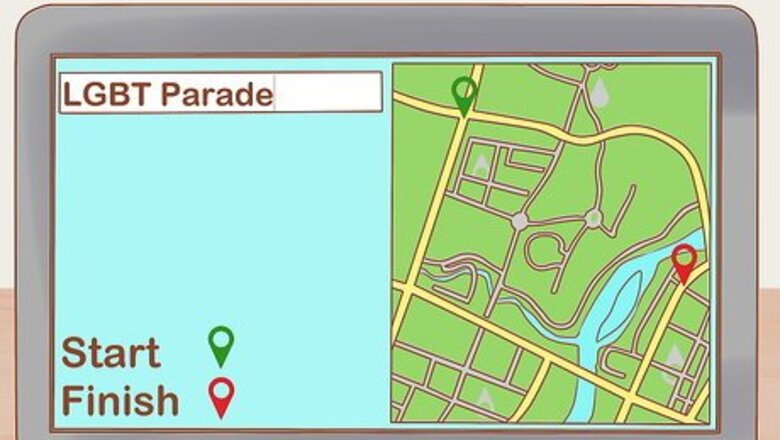
views
Celebrating Pride at the Parade and Beyond

Scout out a viewing area ahead of time. Once you’ve decided where you’ll be celebrating, look up the parade route and start to think about where you want to watch. Many people like to watch Pride parades from outside major LGBT landmarks (like the Stonewall Inn in New York City), but these areas can get crowded fast. If smaller crowds and more breathing room is more your speed, look for wider streets on less central areas of the route. You can also try to watch the parade from a building along the route. You won’t be as close, but you’ll have a better view and less crowded atmosphere.
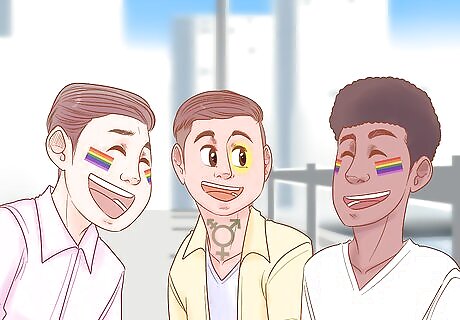
Make sure your group is all on the same page. If you’re going with a big group, make sure to talk beforehand about what everyone wants out of the day. Some people might want to party or drink, while others would just relax and walk around the neighborhood. Talk about what you want to do, then split up based on preferences. If you’d rather head to Pride on your own, it’s a great chance make friends in the crowd or meet people in the community outside of your friend group. Remember to stay safe and use common sense when talking with strangers.

Pack appropriately. It's good to bring food and water. If you want to buy things, bring cash, because vendors may not take credit cards. You will want to pack: A water bottle Snacks (e.g. fruit or granola bars) Cash Headphones or earplugs if you have sensory issues
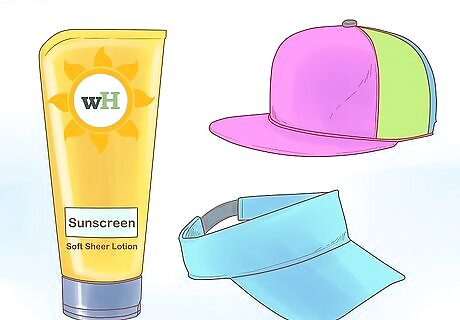
Wear sunscreen and a hat. Another Pride essential: sun protection. Put on a layer of sunscreen before you leave and bring a bottle so you can reapply throughout the day. For extra protection, bring along a hat and sunglasses. This is especially important if you’re wearing an outfit or costume that shows more skin than usual! To make your sun protection part of your outfit, you can even decorate your hat or sunglasses to match.
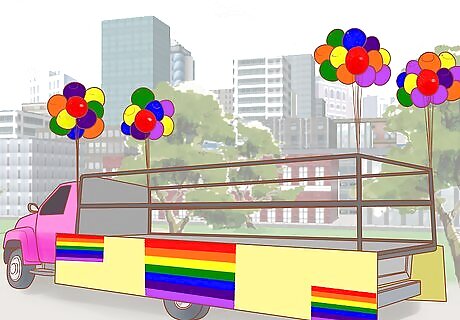
Expect wild floats and high spirits. Pride parades feature floats and marchers both tame and wild. Every parade is different, but you can expect marching bands, clowns, drag queens, and dancers alongside LGBT-friendly politicians, church choirs, and local businesses. Every float is unique, but each participant will be spirited and excited to be there. You can also expect to see some contingents that march in nearly every LGBT Pride parade, such as Parents, Friends, and Families of Lesbians and Gays (PFLAG) and People with AIDS.
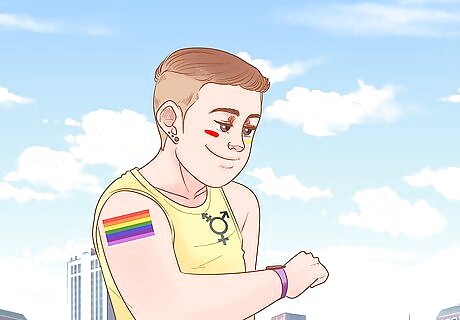
Get there early to claim your spot. Pride parade routes get crowded fast, especially in big cities, and streets getting to the route can fill up or even close down, making it hard to get to your viewing area. Plan to get there at least an hour early to make sure you can claim your spot!

Head to other Pride events after the parade. While the parade is typically the main event of a city’s Pride celebrations, the festivities don’t end there. If you’re looking to celebrate before and after the parade, you can check out bars and nightclubs having Pride parties, or opt for sober or family-friendly events. Look online to see what events your city is offering and plan out the rest of your day. Try to head for events that give back to the LGBT community. Their advertisements should say something like, “Proceeds go to…”, followed by a non-profit LGBT group.
Dressing for Pride
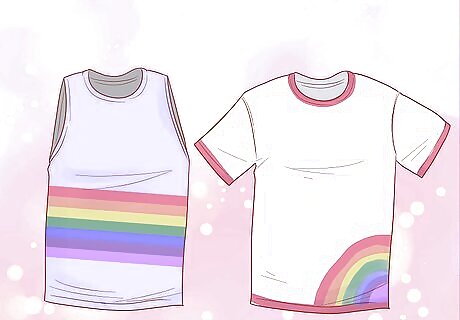
Dress in rainbow colors to show your support and fit in with the crowd. At a Pride parade, wearing rainbow patterns is the perfect way to stand out and show your support while blending in with the crowds. Look for rainbow everything—shirts, shorts, dresses, rompers, hats, shoes, and more! Look online for the widest range of rainbow clothing choices. Don’t forget to bring along a rainbow flag to wave! Buy one online well in advance of the parade to ensure that they don’t sell out. Remember to check the weather before choosing your outfit. Many Pride parades are held in warm weather, so go with lightweight fabrics to keep you comfortable.
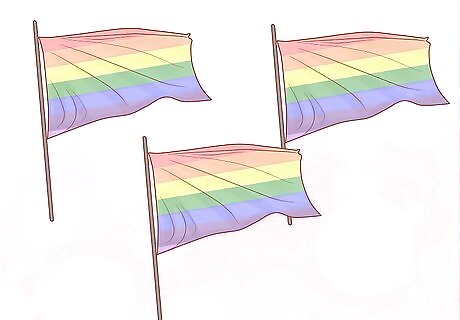
Dress up in colors for another LGBT flag. While the rainbow flag is the most well-recognized LGBT symbol, there are plenty of other colors you can dress up in and flags you can wave to support different parts of the community. Look up the flags, see what the design stands for, and choose one to show your support. Here are a few choices: The transgender flag, which has pastel blue, light pink, and white stripes. The pansexual pride flag, which is 3 stripes of hot pink, bright yellow, and blue. The bisexual flag, which uses dark pink and royal blue along with purple. The intersex pride flag, which has a yellow background and a purple “O” shape in the middle.
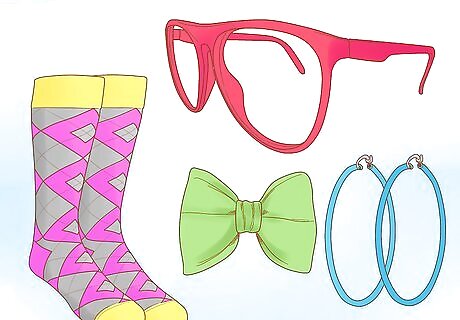
Accent your outfit with bright accessories. Complete your look with brightly-colored socks, tights, or stockings, sunglasses, and jewelry. You could even bring along a glittery bag or fanny pack to hold your gear in style. Wilder accessories like feather boas and tutus are also perfect for Pride. Make your outfit as crazy or relaxed as you want—it’s all about expressing yourself.
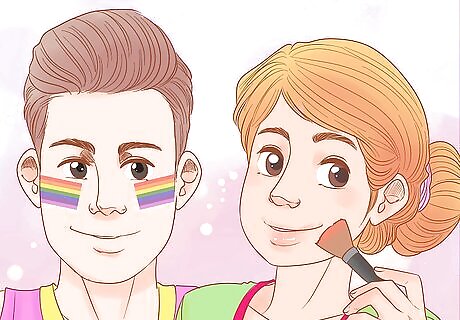
Go for bright, glittery makeup and a fun hairstyle. Makeup is a great way to finish off your Pride look! Feel free to go all-out with bright eyeshadow and lipstick, body glitter, and face paint. You can keep your hair casual and relaxed or make it part of your style as well. You could try non-permanent hair dye or add hair accessories like extensions, feathers, or headbands to make your hairstyle pop.
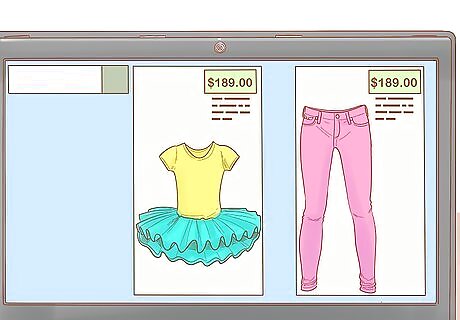
Wear a costume to express your creativity. If you feel like standing out, Pride is a great time to try out crazy costumes. Look up examples online to get an idea for what other people wear, then go for a look that’s as creative or over-the-top as you want. You could dress like a movie character, a fairytale creature like a mermaid or unicorn, or anything else that’s fun and eye-catching. Use your outfit as a way to express yourself, not offend or make fun of others. Pride is all about loving people for who they are.
Staying Safe and Respectful
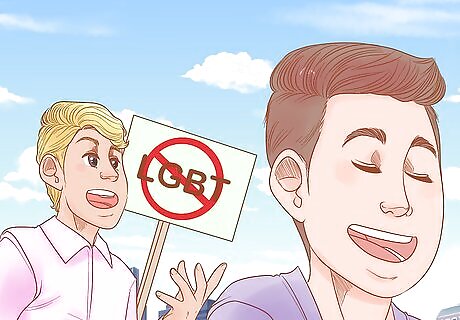
Ignore protestors, or keep conversations short and polite. LGBT Pride events can attract protestors who don’t approve of the community or think that being LGBT is wrong. Don’t let protestors—or anyone else—bother you or ruin your day. Ignore them if you can, or keep interactions as brief as possible. If a protester comes up to you, for example, you could say something like, “I don’t agree with you, but I’m not interested in talking about it right now.”
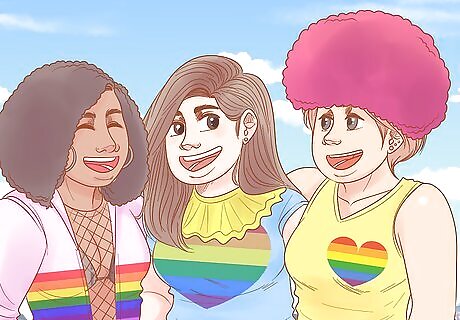
Respect the different costumes and signs that you see. Pride parades bring together people from across the LGBT community, including lots of straight people. Expect to see people expressing themselves through costumes and signs, and remember that you might not agree with all the things you see or hear. It’s important to celebrate the diversity of people and viewpoints in the LGBT community, even if it feels uncomfortable at first. Challenge yourself to accept everyone as they are today—including yourself! It’s OK to disagree with someone and talk about your different perspectives, but never make anyone ashamed of who they are or what they believe.
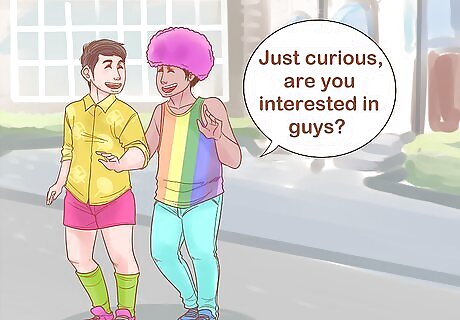
Avoid assuming anyone’s sexual orientation. Pride parades are open to people of any sexual orientation, from LGBT to straight. Don’t make any assumptions about people’s preferences. If you’re curious or interested in them, simply ask first. Pride isn't just for queer people, but also trans and intersex people, who may or may not be straight. You could say something like, “Just curious, are you interested in guys? I think you’re really cute.” Remember that they might not feel comfortable sharing, and that’s OK too. Be confident; Pride events are a great chance to go outside your comfort zone and be more open than you usually would.
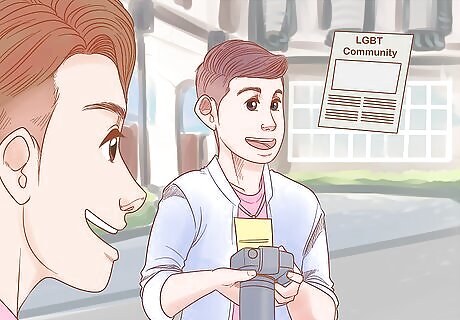
Make up an excuse if you’re LGBT but not ready to come out. It’s completely OK to attend a Pride parade when you’re not ready to come out yet. In fact, Pride can be a great way to explore the community without feeling pressured to define your orientation. If it makes you feel more comfortable, though, you can have an excuse ready in case you run into anyone you know. You could say that you’re there supporting an LGBT friend, that you’re writing a paper on the LGBT community, or even that you were just curious. People of all sexual orientations attend Pride parades; just being there doesn’t mean that people will assume you’re LGBT.
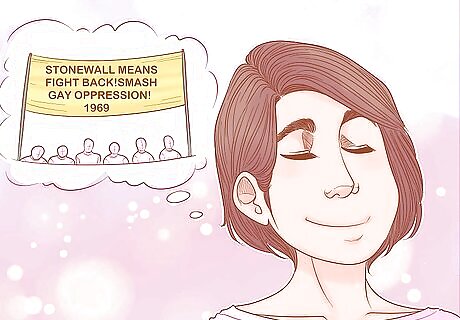
Keep the history of Pride in mind. Pride parades today are huge, flamboyant celebrations of color and life, but they started as a march in remembrance of the Stonewall Riots in 1969. That first Pride parade was a turning point for the LGBT community, where activism turned from more serious marches to loud-and-proud celebrations. Take the time to remember the hardships that the LGBT community has gone through and appreciate the strides its made, while recognizing that there is a lot more to be done. Keep in mind that there are LGBT people and people fighting for equality all around the world.
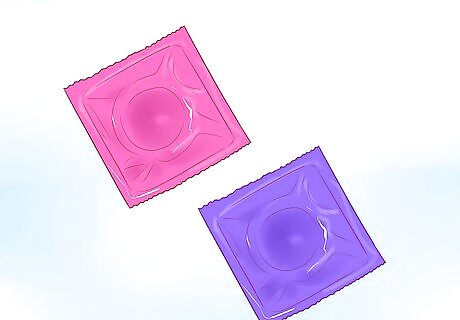
Use protection and stay safe if you choose to have sex. Pride is a great time to meet people to get intimate with, but remember to stay safe and use protection. Bring condoms and make sure to ask any potential partners if they’ve been tested for STDs, and try to celebrate with people you know and trust.
Choosing a Parade Location
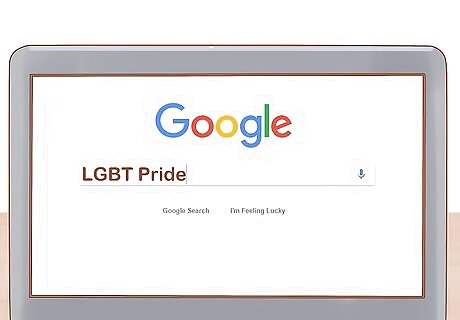
Search online to find the date of a Pride parade near you. Depending on where you live, even smaller cities and towns now hold their own Pride parades. Most are held in June, which is LGBT Pride month, but other events are scattered throughout the summer. Look online to see when and where the closest Pride parade is. You can also reach out to your local LGBT center to ask about local Pride events, or even see if you can plan your own. Going to a Pride parade in your town or city is a great way to celebrate with your local LGBT community.
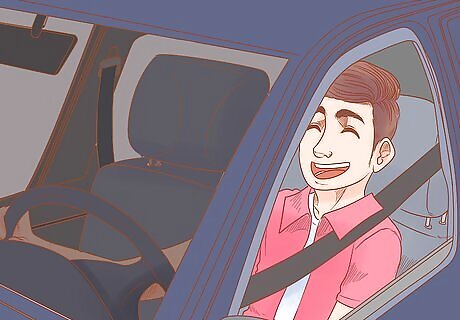
Travel to a different parade to experience a new community. Going to a Pride parade outside of your area is a great opportunity to experience a different culture and mix with a new LGBT community. It can also be a great option if you want to avoid running into anyone you know at local celebrations. Look up Pride traditions in other cities to decide where you want to go. Smaller areas will have shorter, more intimate celebrations, while bigger cities tend to go all-out—New York City’s parade can last for up to 9 hours! You can check out an online Gay Pride calendar to find Pride events near and far.
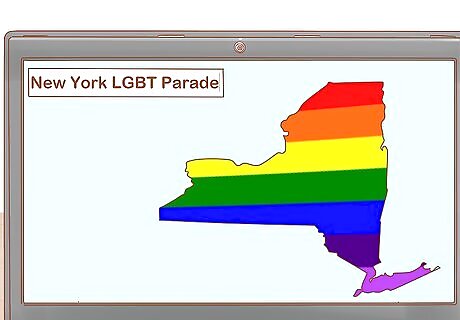
Check out a famous parade for the most elaborate celebrations. Pride events are held all over the world, and some cities are known for their trademark events and unique histories, Whether you’re close by or looking to travel to a distinctive celebration, going to one of these huge, well-known events is a great way to connect with different communities and celebrate in style. Check out places like: New York City, which held the first ever LGBT Pride event in 1970, one year after the Stonewall Riot. In addition to the parade, which welcomes over 40,000 marchers, the NYC celebration also features dance parties and a big street festival. Amsterdam, where the Pride celebration lasts for a week and ends with a colorful boat parade down the city’s canals. Sydney, Australia, where Pride celebrations last for multiple weeks in February and March, featuring a fair, comedy festival, pool party, and several art shows. Puerto Vallarta, Mexico, which is known its welcoming atmosphere during its Pride events in May. The parade ends with a block party, and the celebrations also include a combination drag pageant and obstacle course race.

















Comments
0 comment